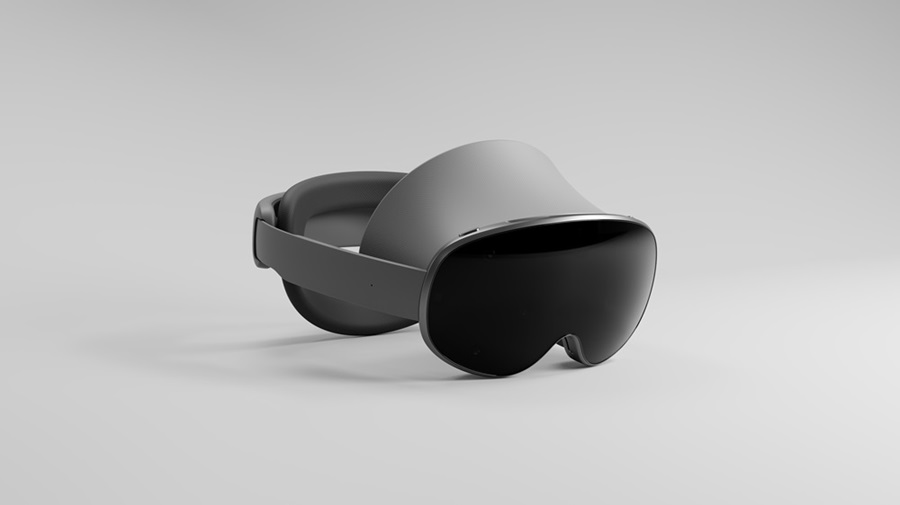
In Augmented Reality, Virtual Reality and Mixed Reality News
December 13, 2024 – Google, Qualcomm, and Samsung have this week collaboratively announced the launch of Android XR, a new operating system designed for “the new era of XR” (extended reality), with AI at its core.
According to the companies, the Android XR platform, along with its accompanying SDK, empowers XR creators to develop state-of-the-art experiences and deploy them across a variety of devices from glasses to headsets. According to Qualcomm, the platform builds upon its own Snapdragon Spaces XR framework, which utilizes OpenXR standards to simplify development and enhance cross-device compatibility.
Coinciding with the announcement, Samsung also unveiled its forthcoming XR headset, codenamed “Project Moohan,” as the first device to leverage the Android XR platform. Powered by Qualcomm’s Snapdragon XR2+ Gen 2 chipset, Project Moohan is set to debut in 2025, with more devices to follow.
In addition to headsets, Google stated that Android XR will support glasses for all-day help in the future, and expressed a desire to provide users with lots of choices of stylish, comfortable glasses that work seamlessly with other Android devices. Glasses with Android XR will also put the power of Gemini one tap away, providing helpful information to users, such as directions, translations, or message summaries without needing to reach for a phone, and instead putting it all within the wearer’s line of sight or directly in their ear, according to Google.
Google noted that it will soon begin real-world testing of prototype glasses running Android XR with a small group of users in order to help create more helpful products, as well as to iron out any potential privacy issues for users, and those around them.

Project Moohan and Samsung’s Vision
Samsung has introduced “Project Moohan,” the first XR headset designed to integrate with the Android XR platform. According to the company, the headset was designed to be comfortable with balanced weight distribution and will offer state-of-the-art displays, passthrough capabilities, and natural multi-modal input methods, including hand, eye, and voice tracking.
Highlighting the benefits of Android XR, Samsung stated that the platform leverages the power of Google’s Gemini AI to bring together a conversational user interface (UI) and a contextual understanding of the world around the user in order to offer capabilities beyond gestures or a controller, and will instead utilize voice and natural conversation to elevate the experience – presumably all features and functionality that will be included in Project Moohan.
“We are at an inflection point for the XR, where breakthroughs in multimodal AI enable natural and intuitive ways to use technology in your everyday life”, said Sameer Samat, President of Android Ecosystem, Google. “We’re thrilled to partner with Samsung to build a new ecosystem with Android XR, transforming computing for everyone on next-generation devices like headsets, glasses and beyond.”
“XR has quickly shifted from a distant promise to a tangible reality. We believe it has the potential to unlock new and meaningful ways to interact with the world by truly resonating with your everyday lives, transcending physical boundaries,” added Won-Joon Choi, EVP and Head of R&D, Mobile eXperience Business at Samsung. “We are excited to collaborate with Google to reshape the future of XR, taking our first step towards it with Project Moohan.”

A Unified XR Ecosystem
Beyond Samsung, the Android XR platform is expected to attract other device manufacturers, with Qualcomm Technologies’ SVP & GM of XR, Ziad Asghar, announcing during the launch that the company is working to extend the platform so that more OEM partners including Lynx, Sony and XREAL can explore the development of Android XR devices.
Developers can now access a preview of the Android XR SDK through Google. Additionally, existing Snapdragon Spaces Unity developers can also seamlessly migrate their existing Snapdragon Spaces projects to Unity 6, which now includes support for Android XR. Qualcomm also added that it plans to release a Snapdragon Spaces Compatibility Plugin for Android XR in early 2025, enabling applications to function across devices supporting either Snapdragon Spaces or Android XR.
The companies noted that their collaboration marks the next step forward in scaling the XR ecosystem. The Android XR platform and Samsung’s Project Moohan headset are both set to debut in 2025.
Image credit: Samsung / Qualcomm / Google
About the author
Sam is the Founder and Managing Editor of Auganix. With a background in research and report writing, he has been covering XR industry news for the past seven years.
